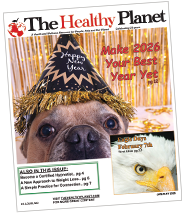By Teresa Garden, DVM
Hyperbaric oxygen therapy (HBOT) is the medical use of oxygen as a drug at a level higher than atmospheric pressure. The patient breathes 100% oxygen in a hyperbaric chamber. This allows the blood to deliver 15-25 times more oxygen to tissues and organs of the body. This promotes faster and more efficient healing for a wide variety of diseases and ailments.
Under hyperbaric pressure, healing oxygen molecules are absorbed by the alveoli in the lungs. It then diffuses across alveolar epithelium into the blood. From the blood the oxygen goes into capillaries and then into the cells and tissues of the body where it is needed. This modality enables oxygen to reach damaged tissue 3-4 times farther than just by normal red blood cells.
The benefits of HBOT are vast. It will “jump start” cells into a hyper functioning state. The cells perform at an optimum level in ischemic disease. It allows oxygen to get into the brain and nerve tissue. It stimulates growth of new capillaries, restores circulation, and eliminates hypoxia. HBOT stimulates connective tissue cells and promotes growth of new skin. It increases the ability of white blood cells to remove foreign bodies such as bacteria, fungi, dead cells, and waste products. It stimulates remodeling of bone and stimulates the immune response. HBOT has potent anti-inflammatory effects. It decreases edema and decreases damage to cells, tissues, and blood vessels. It decreases the effect of radiation-induced injury to bone and soft tissue. HBOT inhibits some bacteria (clostridial toxins) and increases performance of some antibiotics and medicines (fluorquinolones, amphotericin B, aminoglycosides).
HBOT is still an under utilized modality in veterinary medicine. HBOT has been used since the 1950s to treat humans with a wide range of medical and surgical conditions. It was first used in the late 1990s to treat traumatic brain injuries in veterinary patients. The first HBOT chambers specifically for small animals became available in 2011. Several veterinary schools now have them and the number of facilities offering HBOT is growing. The chamber can hold a pet weighing up to 180 pounds. There are port holes in the chamber to allow the pet to see out. No anesthesia is required although some pets may need light tranquilization or sedation if afraid of confinement. There is a video monitor for monitoring the patient and most animals tolerate the chamber very well. A treatment session runs from 45-60 minutes. Treatments may start at 2 or 3 a day and then taper down. A total of 20-45 treatments may be given depending on the condition being treated. HBOT is covered by many pet insurance plans.
The indications of use for HBOT are many and varied. The applications are largely adapted from human studies. It can be used to treat the following conditions: head trauma, brain and spinal cord issues, internal trauma, smoke inhalation, severe burns, skin grafts and flaps, non healing wounds, osteomyelitis, bone injury, orthopedic surgery, insect bite, snake bite, stroke, pancreatitis, sepsis, peritonitis, crushing wound injuries, aortic thromboembolism, post CPR revival, arthritis, intervertebral disc disease, vestibular disease, gangrene, radiation injury, and heat stroke.
There are some conditions in which HBOT would be contraindicated: upper respiratory infection, pneumothorax, pneumomediastinum, respiratory failure, uncontrolled seizures, comatose, unconscious, semi-conscious, asthma, and pregnancy. Complications may arise from HBOT. The formation of reactive oxygen species (ROS) can lead to toxicity. This is a serious complication. Decompression is instituted to correct. Ear discomfort can occur and is corrected by slowing the rate of the process during compression or decompression.
Further scientific research is needed to maximize the potential of HBOT in veterinary medicine. Treatment protocols still need to be standardized. Studies are needed to compare the effectiveness of low-pressure versus high-pressure HBOT and to determine the optimal length and frequency of an individual’s treatment for a specific condition. Many pets may benefit from this important emerging therapy. For more information on HBOT please consult the Veterinary Hyperbaric Medicine Society.
Dr. Teresa Garden is chief veterinarian/ owner of Animal Health & Healing, a full-service holistic and conventional veterinary practice in the Maplewood/Richmond Heights area. 314-781-1738. www.AnimalHealthandHeaing.com.


